What's New
Displaying results 2001 - 2010 of 4899
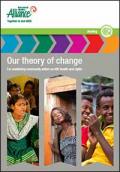
Resource | Publications,
The International HIV/AIDS Alliance’s theory of change sets out the difference we want to see in the world, and defines the logical sequence of changes we believe are needed to achieve our desired outcomes. It describes the assumptions behind our chosen strategies (as set out in HIV, Health and Rights: Sustaining Community), and the preconditions that need to be in place for these changes to occur. This theory of change is designed to help us better describe what we do, provide a tool for learning and reflection and evaluate our work.
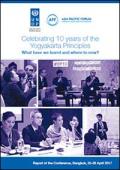
Resource | Publications,
This report documents the discussions and recommendations made during the conference 'Celebrating 10 years of the Yogyakarta Principles: What have we learnt and where to now?' held from 25-26 April 2017 at the Dusit Thani Hotel in Bangkok, Thailand.
Since the adoption of the Yogyakarta Principles, many advances have been made toward ensuring that people of all sexual orientations and gender identities can live with the equal dignity and respect to which all persons are entitled. Many States now have laws and constitutions that guarantee the rights of equality and non-discrimination without distinction on the basis of sexual orientation or gender identity. Internationally, including within this region, there is increasing discussion about discrimination experienced by intersex people on the basis of their sex characteristics. With these developments and challenges in mind, the discussion covered broad-ranging issues and reached beyond the Principles as they were developed a decade ago, based on the existing international human rights law at that time. It encompassed legal developments over that period and other international, regional and national measures to promote and protect the rights of LGBTI people.
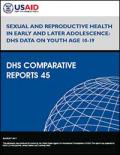
Resource | Publications,
Adolescence is a period of transition from childhood to adulthood when many behaviors and events set the stage for adult health. Demographic and Health Surveys (DHS) data are often used to describe adolescents age 15-19 but are infrequently used to examine younger adolescents age 10-14.
This study employs retrospective data from women and men age 15-24—the most recent cohort that experienced adolescence in the 5 years preceding the survey—to investigate health outcomes during the full range of adolescent years from age 10-19. For 52 countries, this study compiles adolescent sexual and reproductive health indicators in the areas of marriage, sexual activity, contraceptive use, fertility, maternal health, and gender-based violence.
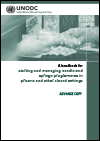
Resource | Publications,
To successfully address HIV and hepatitis where injecting drug use occurs, countries should prioritize implementing NSPs and evidence-based drug dependence treatment (specifically OST), HIV testing and counselling and access to antiretroviral therapy.
Needle and syringe programmes (NSP) provide access to sterile injecting equipment to people who inject illicit drugs to prevent the transmission of HIV and hepatitis B and C through shared injection equipment.

Resource | Publications,
The AIDS Epidemic Modelling is a useful and practical exercise that enables HIV data experts to effectively use country specific up-to-date epidemiological evidence and real time data to develop reliable population size estimates and based on country specific best practices construct high impact prevention and treatment scenarios to optimize the program to maximize impact, identify and mitigate key data gaps and connect potential applications of the modelling approaches for strengthening the national HIV response.
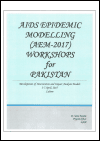
Resource | Publications,
Objectives of the AEM workshop are to 1) explore the impact of alternative intervention packages on the future of epidemic, 2) compare these packages on terms of key policy variables such as infections averted, total deaths averted and relative costs and 3) construct Intervention and Impact Analysis Scenarios based on agreed coverage and intervention packages.
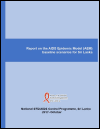
Resource | Publications,
Estimation of people living with HIV (PLHIV) in Sri Lanka has been conducted using estimation and projection package (EPP) and Spectrum since 2009. During 2016 also PLHIV estimation was carried out using EPP and spectrum software (version 5.571 in 2016). Spectrum software was developed by Avenir Health (www.avenirhealth.org) and the Estimates and Projections Package, which is developed by the East-West Center (www.eastwestcenter.org). The UNAIDS Reference Group on Estimates, Modelling and Projections provides technical guidance on the development of the HIV component of the software (www.epidem.org). The assumptions in the models about patterns of HIV transmission and disease progression are used to obtain age- and sex-specific estimates of the number of people living with HIV, the number of people newly infected with HIV and the number of people dying from AIDS-related causes as well as other important indicators.
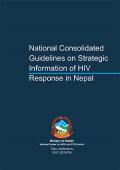
Resource | Guidelines,
This guideline has developed M & E framework for measuring the progress of NHSP indicators and link to result in chain framework, provide a road map for data sources, data collection, analysis and use of program implementation, information flow, and information products within the M & E system. This document will guide all relevant stakeholders on their M & E roles.

Resource | Publications,
2016 is the first year of Youth LEAD to implement its Strategic Planning (2016-2018) and the first year of the Sustainable Development Goal. As expected the shifting funding landscape on HIV was felt distinctly and it has brought both challenges and opportunities to Youth LEAD. Reflecting back, Youth LEAD’s efforts accomplishments and challenges.
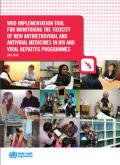
Resource | Tools,
This implementation tool describes the recommended approaches for routine monitoring of toxicity integrated with the national monitoring and evaluation system and targeted approaches to monitoring toxicity to enable enhanced monitoring and reporting of treatment-limiting toxicity to support country implementation and generation of local data.
In addition to recognizing the linkages, coinfected populations and commonalities across TB, hepatitis B and C and with the aim of encouraging integration, this tool also highlights the recommended toxicity monitoring approaches and existing tools across these disease areas.





